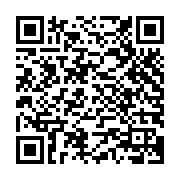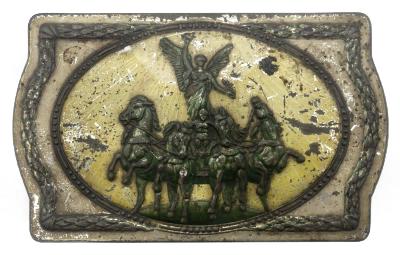Magic Lantern Slide portrait of General Kitchener
c. 1900Magic Lantern Slide greyscale portrait of General Kitchener labelled 'Conquest of the Soudan', referring to the Anglo-Egyptian conquest (1896–1899), which he led.
He is looking directly into the camera and he has his arms folded. His hair is parted in the middle. His collarless tunic is plain with metal buttons and has a pale shirt beneath it. A Sam Browne belt can be seen going diagonally from his shoulder to his waist.
This slide is No. 36 in a set of 50 slides called 'Conquest of the Soudan' produced by British slide makers, York & Son in London.
Horatio Herbert Kitchener (1850-1916) was a British Field Marshal and colonial administrator who played a key role in World War I.
He was born in Ireland and trained as a military engineer. He served in the Middle East and Egypt, and became commander-in-chief of the Egyptian army in 1892.
He served as chief of staff in the Second Boer War, and later became Commander-in-Chief.
Kitchener became Secretary of State for War at the start of World War One. He oversaw the rapid expansion of the British Army through the recruitment of volunteers. He became the face of the First World War when he appeared on the 'Your Country Needs You' poster.
He died in 1916 when his ship, HMS Hampshire, struck a German mine while en route to Russia on a diplomatic mission. He was the highest ranking officer to be killed during the war.
According to 'Victorian Collections', lantern slides, sometimes called 'magic lantern' slides, are glass plates on which an image has been secured for the purpose of projection. Glass slides were etched or hand-painted for this purpose from the Eighteenth Century but the process became more popular and accessible to the public with the development of photographic-emulsion slides used with a 'Magic Lantern' device in the mid-Nineteenth Century.
Photographic lantern slides comprise a double-negative emulsion layer (forming a positive image) between thin glass plates that are bound together. A number of processes existed to form and bind the emulsion layer to the base plate, including the albumen, wet plate collodion, gelatine dry plate and Woodburytype techniques. Lantern slides and magic lantern technologies are seen as foundational precursors to the development of modern photography and film-making techniques.
Details
Details
"Conquest of the Soudan"
"No.36"
"Copyright"
Related Objects
Related Objects
Other items from Recollections of War
- Queensland Patriotic Fund 'Grand Choral Festival' programme
- King George V 'Our Sailor King' tin with hinged lid
- 'Cadbury's Gift Box' chocolate tin featuring the Quadriga sculpture
- Cabinet card photograph of two United States Army Officers prior to World War One
- Free French Air Force (F.F.A.L.) pilot's wing badge - large
- Free French Air Force (F.F.A.L.) pilot's wing badge - small
- Miniature enamel badge featuring the Cross of Lorrraine
- 1937 Coronation medal - King George VI & Queen Elizabeth
- 1920 medallion celebrating the visit to Australia of the Prince of Wales
- 'Queensland Gives Her Best' medallion 1914
- Australian Red Cross Tasmanian Division V.A.D. badge
- Australian Light Horse moulded figurine



Scan this QR code to open this page on your phone ->





